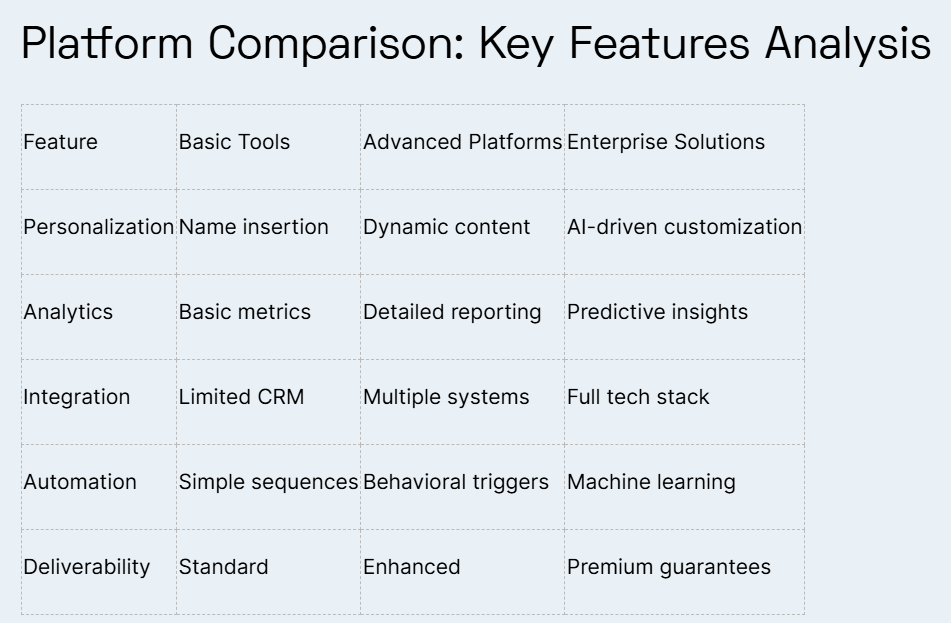Why Smart Sales Teams Rely on Cold Email Tools to Drive Results

Getting someone to open, read, and reply to your cold email can feel like winning the lottery but it doesn’t have to. While inboxes are more crowded than ever, email remains a top choice for buyers when it’s done right.
The key isn’t sending more emails, it’s sending smarter ones. Successful sales teams are now using targeted messaging, smart timing, and automation tools to cut through the noise and spark real conversations.
If your outreach feels like it’s hitting a wall, it’s time to rethink your strategy. In this blog, we’ll show you how to turn cold emails into warm leads.
The Foundation of Modern Sales Success
Today’s sales environment demands a completely different approach from what worked even five years ago. The most successful teams have moved beyond spray-and-pray tactics to embrace sophisticated, data-driven strategies.
Understanding the Shift to Digital Outreach
The sales landscape has fundamentally changed. Prospects research solutions online before ever speaking with a salesperson, and they expect communications to be relevant and valuable. The cold email tools have become essential because they enable sales teams to meet these elevated expectations while maintaining efficiency. These platforms don't just send emails—they help create meaningful connections at scale.
Modern buyers have adapted to filter out irrelevant messages almost instantly. They're looking for solutions that address their specific challenges, not generic pitches. This shift has made sophisticated outreach technology a necessity rather than a luxury.
Breaking Through the Noise
With the average executive receiving hundreds of emails daily, standing out requires more than good timing. Effective sales email strategies must be supported by technology that can personalize messages, track engagement, and optimize delivery. The teams that succeed are those that combine human insight with technological precision.
The most effective approach involves understanding your prospects’ pain points and crafting messages that provide immediate value. This requires tools that can gather intelligence about prospects and automatically customize content accordingly.
Building Scalable Processes
Manual outreach doesn't scale in today's competitive environment. Sales automation tools allow teams to maintain a personal touch while reaching significantly more prospects. The key is finding the right balance between automation and authenticity—something that modern platforms excel at delivering.
Successful teams use these tools to create repeatable processes that can be refined and optimized over time. This systematic approach ensures consistent results regardless of individual rep performance variations.
Core Features That Drive Results
The most effective platforms share several key capabilities that directly impact sales outcomes. Understanding these features helps teams make informed decisions about their tech stack.
Personalization at Scale
Email outreach techniques have evolved far beyond simple mail merge functionality. Today's leading platforms can dynamically insert relevant content based on prospect behavior, industry, company size, and dozens of other variables. This level of personalization dramatically improves response rates.
The best tools pull data from multiple sources to create highly targeted messages. They can reference recent company news, mutual connections, or industry trends to make each email feel genuinely personalized. This approach transforms cold outreach into warm conversations.
Automated Follow-up Sequences
Research shows that follow-ups significantly increase response rates, yet many sales reps struggle with consistent follow-through. Modern platforms solve this by automating sequences that adapt based on prospect behavior. If someone opens an email but doesn't respond, the system can automatically send a different type of follow-up.
These sequences can be sophisticated, incorporating multiple touchpoints across different channels. The most advanced systems learn from interactions and adjust timing and content accordingly.
Analytics and Performance Tracking
Cold emailing best practices emphasize the importance of continuous improvement. Leading platforms provide detailed analytics that show exactly what's working and what isn't. Teams can track open rates, response rates, and conversion metrics to optimize their approach.
The most valuable insights come from understanding patterns across campaigns. Which subject lines generate the highest open rates? What time of day produces the best responses? These platforms make it easy to identify winning strategies and replicate them.
Strategic Implementation for Maximum Impact
Simply having the right tools isn't enough; success requires strategic implementation and ongoing optimization. The most successful teams approach their technology as part of a broader sales strategy.
Segmentation and Targeting
Effective campaigns start with proper audience segmentation. Modern platforms allow teams to create highly specific target groups based on firmographic data, behavioral patterns, and engagement history. This precision targeting ensures messages reach the most receptive prospects.
The best segmentation strategies combine demographic data with behavioral insights. Teams can identify prospects who are most likely to respond based on previous interactions and tailor their approach accordingly.
Content Strategy Integration
Sales email strategies must align with broader marketing efforts. The most successful teams create content libraries that can be dynamically assembled based on prospect characteristics. This ensures consistent messaging while maintaining relevance.
Content should be designed to provide value at every touchpoint. Whether it's industry insights, case studies, or educational resources, each message should advance the relationship while moving prospects closer to a purchase decision.
Timing and Frequency Optimization
Understanding when and how often to contact prospects is crucial for success. Advanced platforms can analyze recipient behavior to determine optimal send times and frequencies. This prevents over-communication while ensuring messages are seen.
The best approach involves testing different timing strategies and measuring results. What works for one industry might not work for another, so continuous optimization is essential.

FAQs
What makes a cold email effective?
Cold emailing can be an effective outreach tool, as long as your cold emails are personalized, thoughtful, and include a clear call to action (CTA).
How many follow-ups should I send?
Most successful campaigns include 5-7 touchpoints spread over several weeks. The key is providing value in each message rather than just asking for meetings.
What's the best time to send cold emails?
Tuesday through Thursday, between 10 AM and 2 PM, typically see the highest open rates, though this varies by industry and audience.
Wrapping Up
The evidence is clear: teams that embrace sophisticated cold email tools and implement strategic sales automation tools consistently outperform those relying on manual processes. The investment in technology pays dividends through improved response rates, shorter sales cycles, and higher conversion rates.
Success requires more than just adopting new tools—it demands a commitment to continuous improvement and strategic thinking. The teams that thrive are those that view technology as an enabler of human connection, not a replacement for it.
.jpg)
.jpg)
.jpg)